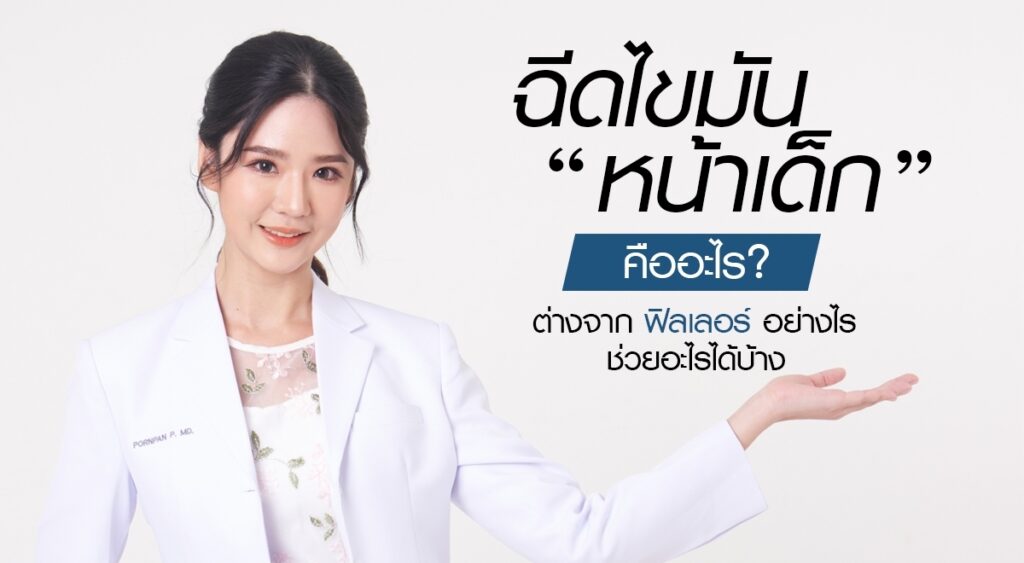
Everyone desires a youthful, plump, and wrinkle-free face. Yet as we age, maintaining that youthful appearance becomes increasingly difficult.
This is why many turn to cosmetic procedures. Among them, Fat Transfer has become highly popular. It helps restore lost volume, rejuvenates tired-looking skin, and softens the signs of aging.
Unlike fillers, Fat Transfer uses the patient’s own fat, reducing the risk of allergic reactions since no foreign substances are introduced into the body. The results are natural-looking and long-lasting.
If you’re curious about what Fat Transfer really is, how it differs from fillers, and what benefits it can provide, here are the expert insights you need to know.
What Is Fat Transfer to the Face?
Fat Transfer is a procedure that involves harvesting fat cells from areas with excess fat, such as the inner or outer thighs, and reinjecting them into specific areas of the face.
It is commonly used to restore volume in hollow cheeks, sunken under-eyes, a short chin, temples, or deep smile lines. The added fat helps smooth out these concerns, leaving the face fuller, firmer, and more youthful in appearance.
Fat Transfer vs. Fillers
Many people wonder how Fat Transfer compares to dermal fillers, and whether the results are truly different.
Here’s a clear breakdown of the key differences, summarized in the table below.
| Fat Transfer | Fillers |
| Fat Transfer is a form of fat cell transplantation. It restores areas where facial fat has diminished over time due to aging.Once injected, the fat naturally integrates with existing facial tissue. This makes the treatment safe and helps prevent the formation of hard lumps. | Fillers, on the other hand, use synthetic hyaluronic acid. They are injected to add volume and support deeper layers such as the bone structure. |
| Fat Transfer typically lasts longer than fillers. The transplanted fat cells can remain in the treated area for years before gradually fading away. | Fillers, by contrast, have a shorter lifespan.They usually dissolve within 6 to 12 months, or even sooner if proper aftercare is not followed. |
| Fat Transfer not only restores volume but also rejuvenates the skin. The stem cells within the transplanted fat help repair damaged tissue, giving the face a softer and more youthful look. | Fillers help enhance facial proportions. |
| Fat Transfer has no risk of allergy because it uses the patient’s own fat. | Fillers may cause allergies because they are synthetic substances. |
| It is cheaper than fillers. | It is more expensive than Fat Transfer. |
| Suitable for those with significant tissue and fat loss, as multiple areas can be treated in one session. | Suitable for those who want to correct specific facial areas. |
Where Can Fat Transfer Be Applied on the Face?
- Forehead – Fat Transfer to the forehead adds volume, reduces wrinkles, and creates a smoother, more dimensional look. It can also enhance facial harmony.
- Temples – Filling the temples helps correct a hollow, tired appearance and restores balance to the face.
- Under-Eyes – Fat Transfer under the eyes reduces hollows and fine lines, making the eyes look brighter and more youthful.
- Upper Cheeks (Apple Cheeks) – Injecting fat here provides natural fullness, giving the face a youthful, lifted look.
- Hollow Cheeks – Treating sunken cheeks restores symmetry and creates a softer, younger-looking face.
- Nasolabial Folds – Fat Transfer to deep smile lines smooths the area from the nose to the mouth, reducing signs of aging.
Who Is Fat Transfer Suitable For?
- Facial Appearance Fat transfer is ideal for individuals who want to enhance overall facial balance and contour. It helps create smoother, more youthful proportions and can complement other cosmetic procedures for natural harmony.
- Age Suitable Most suitable for patients aged 25–55 years, when early signs of facial volume loss begin to appear. However, the treatment can be customized for both younger and older patients depending on individual skin condition.
- Sex (Male/Female) Both men and women can benefit from fat transfer. The approach differs slightly — women often aim for softer, rounded features, while men usually prefer a firmer and more defined facial contour.
- Weight Best for patients with a stable body weight. Those who are extremely thin may have limited donor fat, while those with fluctuating weight should maintain consistency before undergoing the procedure.
- Aging Looks Recommended for individuals showing early to moderate signs of aging, such as dullness, hollowness, or loss of skin elasticity. Fat transfer naturally rejuvenates the face by restoring volume and youthful plumpness.
- Volume Lost Especially effective for patients with noticeable fat or tissue loss in areas such as the cheeks, temples, or under-eyes. Restoring lost volume creates a softer and fresher look.
- Skin Fold Suitable for those with visible facial folds such as nasolabial lines or marionette folds. Fat grafting smooths these creases and blends transitions between facial zones.
- Excessive Skin Patients with mild to moderate skin laxity can benefit from fat transfer, as added volume helps tighten the surface. However, for severe sagging, fat transfer may be combined with lifting procedures for optimal results.
Benefits of Fat Transfer to the Face
ข้อดีการฉีดไขมันหน้าเด็ก
- Fat transfer restores a youthful look up to 5–10 years younger with natural results that blend seamlessly with your facial features.
- Can be applied across the entire face or to specific targeted areas.
- Longer-lasting than fillers, and with proper care, some results may be permanent.
- Improves overall skin quality by reducing fine lines and tightening pores.
- Safe and allergy-free since it uses the patient’s own fat.
Limitations of Fat Transfer to the Face
- Patients who are very thin or underweight may not be suitable candidates, as there is not enough excess fat for the procedure.
- The longevity of results depends on lifestyle and aftercare. Intense exercise, strict dieting, or significant weight loss may reduce the effectiveness of Fat Transfer.
Donor Sites for Fat Transfer
The fat used in Fat Transfer is usually harvested from areas with excess fat, most commonly the inner thighs, followed by the outer thighs.
At WE Clinic, Dr. Pingping performs the procedure with an incision of less than 0.5 cm. The extracted fat is then carefully purified to ensure high-quality fat cells before being reinjected into the face.This process allows precise correction in areas of deficiency or facial contouring as desired. Learn more about Dr. Pingping’s credentials at weclinicbkk.com/doctor-ping-ping/
Steps of Fat Transfer to the Face
- Consultation – Meet with the doctor to assess facial concerns, determine suitability for Fat Transfer, and design a balanced facial outcome.
- Fat Harvesting Preparation – Local anesthesia and a vasoconstrictor are administered to minimize bleeding and bruising.
- Small Incision – A tiny incision, less than 0.5 cm, is made in areas with excess fat.
- Fat Processing – The harvested fat is centrifuged to isolate healthy, viable fat cells for reinjection.
- Special Filtration – The fat is further refined using a micro-filter for better quality.
- Nano Fat Technique – For delicate areas such as under the eyes or fine wrinkles, Nano Fat is used for precise correction.
- Layering Fat Technique – Dr. Pingping’s specialized method injects fat layer by layer under the skin, ensuring better blood supply and higher fat survival.
- PRP Combination (Optional) – In some cases, Growth Factors (PRP) are combined with the fat to improve graft survival, rejuvenate the skin, and enhance healing.
Consult the doctor for a facial assessment.
The doctor makes a small incision, less than 0.5 cm, to remove excess fat.
Fat Transfer
The doctor injects Fat Transfer into the desired areas.
Techniques for Long-Lasting Fat Transfer Results
To achieve the best results from Fat Transfer, good aftercare is essential. However, the injection technique of the doctor also plays a critical role.
Here are Dr. Pingping’s specialized methods at WE Clinic to improve fat survival:
- High quality fat cells selection Fat is harvested only from areas with high-quality fat.
It is then filtered through a special device, ensuring that only the healthiest cells are used. - Nano fat injection technique Dr. Pingping carefully selects ultra-fine fat molecules, called Nano Fat.
This is used for delicate areas such as under the eyes or fine wrinkles.
The technique prevents lumps, minimizes bruising, and is gentle on the skin.
- Layering Fat Technique Fat cells are injected layer by layer under the skin. This allows blood vessels to nourish each layer more effectively.
As a result, fat survival is higher, and the outcome lasts significantly longer.
How Much Does Fat Transfer to the Face Cost?
The starting price for Fat Transfer in one area such as the temples, under the eyes, mid-cheeks, hollow cheeks, or nasolabial folds is around 39,000 THB ≈ 1200 USD (approx)
The cost depends on the number of treatment areas and the techniques applied.
If multiple areas are treated in one session, the price will be adjusted according to the required volume and procedure.
A consultation with the doctor is necessary to design a treatment plan tailored to each patient.
Aftercare for Fat Transfer to the Face
After undergoing Fat Transfer, some swelling may occur during the first 1–7 days.
Do not worry, following the doctor’s instructions will help the swelling subside more quickly.
Here are some simple aftercare guidelines:
- If swelling occurs, take the anti-swelling medication prescribed by your doctor.
- Do not apply hot or cold compresses on the treated area, as this may cause the transferred fat cells to die.
- Avoid getting the needle entry points wet for about 2 days, as they usually take 48 hours to close completely.
- Sleep with your head elevated for about 1 week, and sleep only on your back. Avoid sleeping face down for about 3 months.
- Avoid exercise for about 1 month.
- Do not go on a diet or try to accelerate metabolism.
- Avoid facial massage, laser treatments, sauna, and swimming for about 1 month.
- Avoid fermented foods, irritating foods, vitamins, and alcohol for 1 month.
- Do not smoke for 1 month after Fat Transfer.






FAQ: Common Questions About Fat Transfer to the Face
1. Does Fat Transfer to the face hurt?
You may feel mild discomfort, but it is not as painful as many expect.
Local anesthesia and sedation are used to minimize pain.
After the procedure, temporary swelling or bruising may occur.
2. How long does it take for Fat Transfer to settle?
Fat Transfer usually settles within 1–4 months, with an average of about 3 months.
Some fat will naturally be absorbed, while the remaining fat can stay permanently.
3. How long do the results of Fat Transfer last?
With proper care, Fat Transfer can last permanently once the fat cells survive.
However, unhealthy habits such as heavy smoking, alcohol, or extreme dieting can shorten results.4. Can I add a large amount of fat in one session? The amount of fat injected depends on patient needs, doctor’s technique, and fat quality. Adding more fat does not always guarantee longer-lasting results. A skilled specialist should determine the right volume for each case.
Why Choose Fat Transfer at WE Clinic ?
Fat Transfer requires a specialist with advanced expertise. It is also important to choose a clinic with modern technology and equipment to ensure safety, hygiene, and efficiency.
At WE Clinic, our surgeons are highly experienced in both cosmetic surgery and Fat Transfer. They carefully analyze each treatment area and recommend the right amount of fat for every patient.
We also use advanced technology to preserve high-quality fat cells.
This minimizes fat loss and ensures youthful, natural-looking results without serious side effects.






สำหรับผู้อ่านทุกท่านที่มีข้อสงสัยเพิ่มเติม ทีมแพทย์ We Clinic ยินดีให้คำปรึกษาฟรี
โดยไม่มีค่าใช้จ่าย หรือสามารถปรึกษาหมอทาง facebook หรือ Line ได้ที่นี่เลยครับ